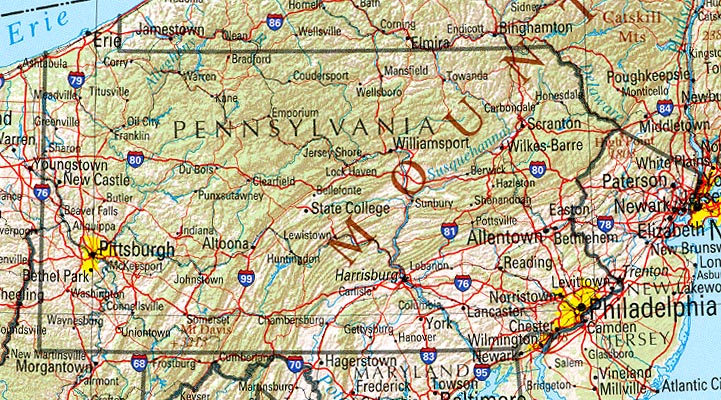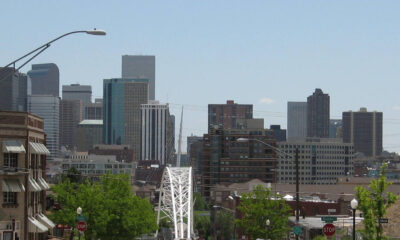Civilization
Passenger Rail Heralds a New Era in Northeast PA

After decades of effort, passenger rail is making its way to Northeastern Pennsylvania. Rail connecting Scranton to New York City has enormous potential, and it can play a pivotal role in connecting New York City and Lackawanna County to Luzerne County.
Passenger rail and new commute patterns
Many see passenger rail as a conduit for job opportunities, especially because many companies offer hybrid options for workers. We may see workers moving to Northeastern Pennsylvania and traveling to New York City a few times per week. The trip is three hours one way, too long to function as a daily commute, but it can offer benefits to the hybrid worker. Conversely, city residents may opt to come to NEPA for work.
For passenger rail to be successful, our local government and community must address housing needs. Demand for safe and affordable housing has been a growing issue for some time, and it was made worse by the pandemic. New construction has been minimal. The housing stock is aging, and residents often cannot afford the necessary maintenance. We are facing a housing shortage that has dramatically increased the cost of ownership and rental at various price points (regardless of subsidies). Entry-level workers and young professionals are shut out of the market.
Last-mile service
We also need to meet “last-mile” transportation challenges. Public transit is limited in Northeastern Pennsylvania. There is no 24 hour/7 day service, and people need to get to their final destinations after arriving at the train station. The American Public Transit Association (APTA) estimates that every $1 invested in public transportation brings an economic return of $4. An impact analysis prepared by Economic Development Research Group on behalf of APTA found:
- Cost savings for public transit passengers exceeded savings for passengers using other forms of transportation, such as private vehicles, taxis, and rideshare apps.
- Public transit resulted in reduced traffic congestion for those who travel by car and truck. Business operating cost savings resulting from reduced congestion are estimated at $800 million annually nationwide.
- Nationwide, it is estimated by APTA that per $1 billion of spending on public transit operations, 20,000 jobs are supported for a year, and per $1 billion of spending on public transportation and capital projects, 13,000 jobs are supported for a year.
Anticipated benefits of passenger rail
The anticipated benefits of investment in passenger rail in NEPA are also numerous. Amtrak has projected $2.9 billion in initial economic activity from jobs created by the construction phase of the project. Workers in various occupations will be needed for the construction, along with support services from local vendors, suppliers, and subcontractors. After the service is operational, Amtrak estimates $84 million annually in economic impact, assuming three daily roundtrips between New York City and Scranton. These impacts include jobs created to operate the railroads in the area, jobs created in tourism and from new business development that results from the service, and ripple effects from those workers spending their money locally.
Passenger rail also presents an opportunity to leverage our tourism assets. Tourism is already a big economic driver in the region, but the train service could enhance it. Certain conditions must be met to make rail-related tourism successful, however.
For instance, we need to recognize that not all our tourism assets are in Scranton or even Lackawanna County. Luzerne, Wyoming, and Wayne Counties (just to name a few) also offer attractive recreation, entertainment, sports, and natural amenities. Tourism bureaus in these counties could collaborate and offer complementary activities with shared themes.
An unrealized potential
Last-mile transportation plays a significant role in tourism as well. If people want to attend a concert at Mohegan Sun Arena at Casey Plaza, a Wilkes-Barre/Scranton Rail Riders game, or other events and activities that are not located near the train station, the ease, efficiency, and cost of that last-mile transportation can either encourage or hinder visitor engagement.
Passenger rail has the potential to enhance Northeastern Pennsylvania’s quality of life in numerous ways. Efforts to improve regional housing conditions and transportation options will bolster this potential and guide progress further in the direction of economic prosperity.
This article was originally published by RealClearPennsylvania and made available via RealClearWire.
Teri Ooms is the Executive Director of The Institute, an applied social science research and economic consulting organizations formed through a collaborative of higher education and business. Based in NEPA, The Institute produces community-based research and client solutions that provide strategies for growing organizational impact and sustainability. She earned her master’s degree in finance and her bachelor’s degree in public administration from the University of Scranton.
-

 Constitution4 days ago
Constitution4 days agoPrecinct Strategy scores again
-

 Education5 days ago
Education5 days agoTitle IX revision sparks State revolts
-

 Civilization3 days ago
Civilization3 days agoLegacy media already assume Trump wins
-

 Civilization3 days ago
Civilization3 days agoSCOTUS Is Last Bulwark Against Critical Legal Studies
-

 Civilization17 hours ago
Civilization17 hours agoAntisemitism – and misguided legislation
-

 News4 days ago
News4 days agoTime to Fly – Really Fast
-

 Civilization3 days ago
Civilization3 days agoEnergy Pipeline Companies Should Follow the Rules of the Road
-

 Education4 days ago
Education4 days agoThe Road Back to Normalcy Starts Where the Problem Began: College Campuses












